| ENGLISH/JAPANESE |
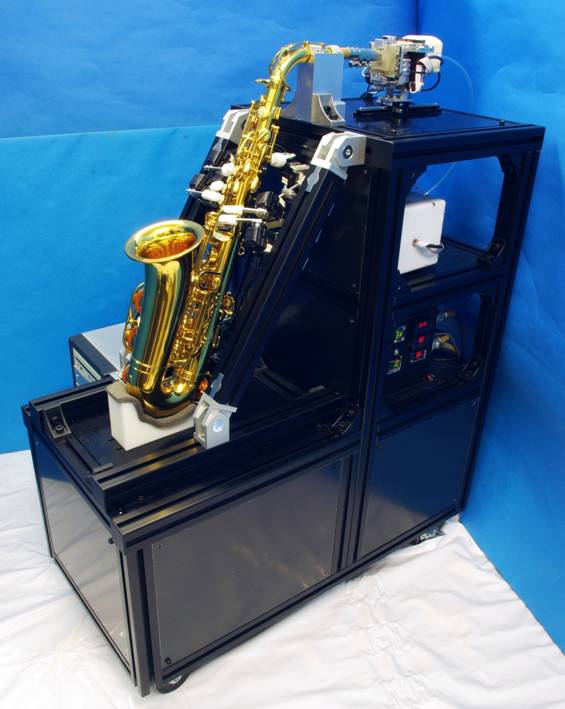 |
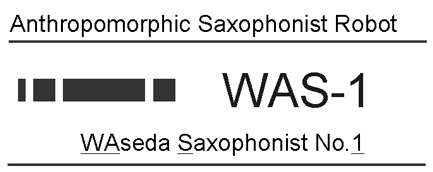 |
||||
|
|
|||||
|
|
|
|
||
|
Our long term goal is to enable the interaction between musicians and robots at the emotional level of perception.
Due to its complexity, we have developed the anthropomorphic flutist robot since 1990. However, there are still difficulties in understanding how musicians transmit their ideas. Therefore, we proposed to study the interaction between musical performance robots to understand better the interaction with human partners. Thus, we have developed the anthropomorphic saxophonist robot, WAS-1(WAseda Saxophonist No.1). |
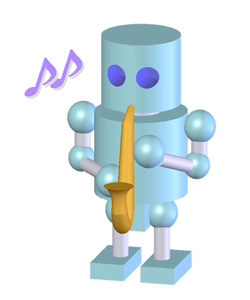 |
|
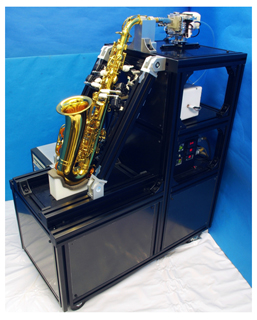 |
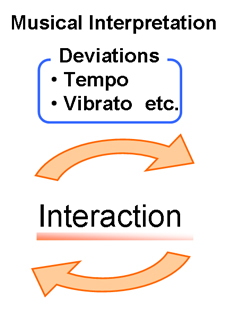 |
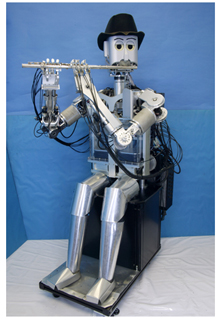 |
| WAS-1 (2008) |
WF-4RIV (2007) |
|
| (About WF-4RIV) |
| -TOP- |
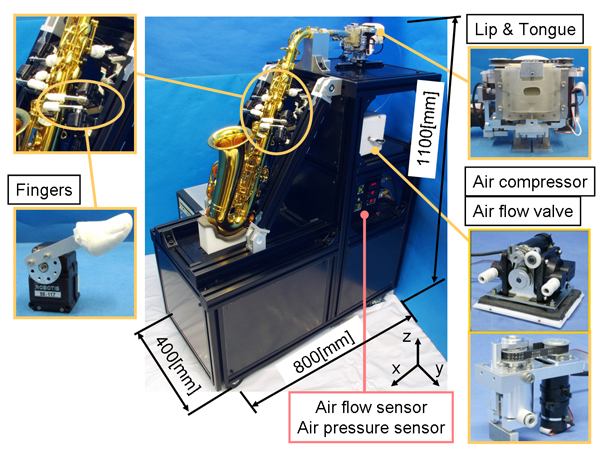 |
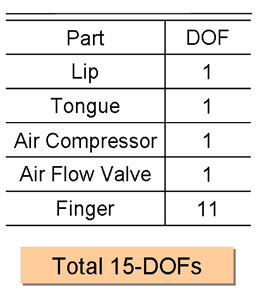 |
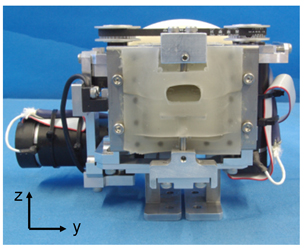 |
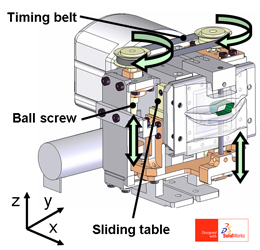 |
|
Lip is most important factor to produce saxophone sound. The artificial lip was designed to produce mechanically the shape and elasticity of the human lip. T-shaped pin is inplanted into the artificial lip and it holds in a saxphone reed. |
||
| Mouth(left)・・・・・ Mouth Mechanism(right)・・・・・ |
| -UP- |
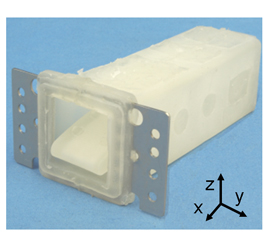 |
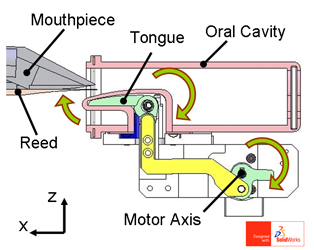 |
|
The tongue and oral cavity are made of rubbers. As shown a left figure, there is tongue near a reed of saxophone and torque is transfered from motor to tongue by link mechanism. As a result, robot can perform techniques,"attack" and "release". |
||
| ・・・・・Oral cavity(left) ・・・・・Tongue mechanism(right) |
| -UP- |
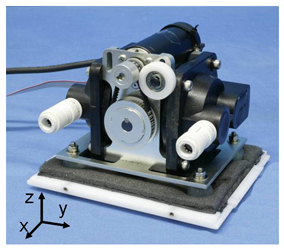 |
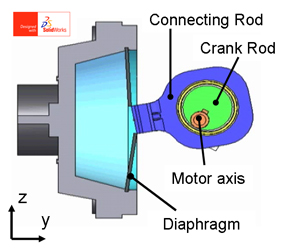 |
|
Air compressor was produced to get it smaller and lighter. Its mechanism is "Eccentric crank mechanism" as shown a right figure. And the air flow valve suppresses the pulse of the exhaled air from the air compressor. |
||
| Air compressor(left)・・・・・ Air compressor mechanism(right)・・・・・ |
| -UP- |
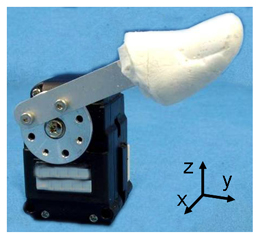 |
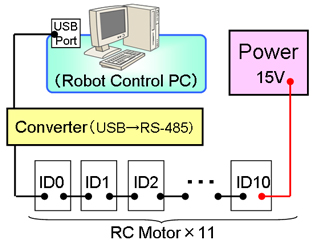 |
|
Fingers mechanism is to open and close saxopohone keys by motor driving. 11 fingers play C3-C#5 notes. As shown left figures, finger motors are applied to serial comunications by RS-485. |
||
| ・・・・・Fingers(left) ・・・・・Fingers control system(right) |
| -UP- |
| -TOP- |
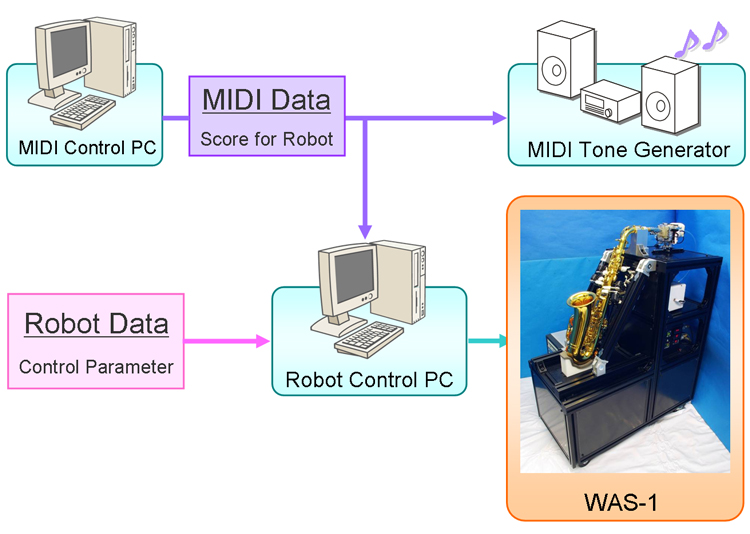 |
| -TOP- |
|
|
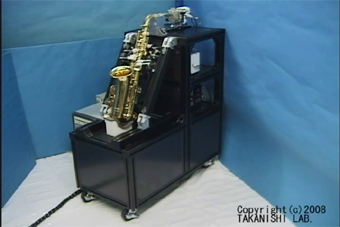
|
Saxophone peformance of WAS-1(mpeg/1:46/20MB) 「Moonlight Serenade」 composed by Gllenn Miller |
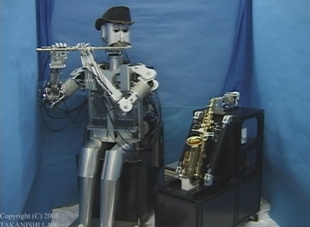
|
WAS-1&WF4-RIV Duet(mpeg/2:38/30MB) 「Duo」 |
| -TOP- |
| Humanoid Robotics Institute, Waseda University | |
| SolidWorks Japan K.K. |
| -TOP- |
| Takanishi Laboratory | Last Update 2008.10.30 Copyright(C) 1990-2008 Team Musical Performance Robot /Takanishi Laboratory All Rights Reserved. |